FALMOUTH – Hilde Maingay wants to solve Falmouth’s wastewater crisis, one urinal at a time.
A youthful 74-year-old, originally from Holland, Maingay believes she is the first person in recent years to say the word “pee” at a public meeting in Falmouth.
She is passionate on the issue of toilets as a way to use sustainable practices to clean up the town’s estuaries and to save the town millions of dollars that officials are proposing to spend on sewers.
“Our conviction is nature has managed to take care of a lot of problems that we can’t duplicate, but we can use nature to assist us in this,” Maingay said. The problem with technology, she said, is, “you solve one problem but you create 10 others in the process. Sewers are a good example of that.”
Estuary Pollution
Nitrogen leaching from septic systems has been polluting Falmouth’s estuaries ever since the building boom in the 1970s and even prior. The problem exists in every town on Cape Cod because the vast majority of the region’s homes use septic systems, which do not remove nitrogen from wastewater.
After the flush and a trip through the septic system, the wastewater containing nitrogen travels through groundwater to the nearest estuary and causes an increase in algae growth that leads to murky water, loss of eel grass and shellfish habitat and, eventually, fish kills.
Falmouth Town Meeting, which begins April 7, includes two warrant articles seeking to fund the town’s comprehensive wastewater planning, including funding for a sewer project in the area of Little Pond in Teaticket, one of the town’s most damaged estuaries.
But Maingay and her husband, Earle Barnhart, 64, want Town Meeting members to vote those articles down. Instead, they want the town to focus on alternative solutions to cleaning up estuaries, like expanding a pilot project that uses the natural filtering powers of oysters to clean up the estuaries and installing urine diverting toilets or other eco-toilets in homes in the Little Pond watershed.
An Early Interest in Ecology
Maingay and Barnhart started closely studying the issue of eco-toilets and urine diversion and speaking up to town officials in 2011. At a public forum to discuss the town’s comprehensive wastewater plan, Maingay brought up the fact that urine diverting could solve the estuary pollution problem. She said, the only reason officials were not considering it as an alternative to sewers is men would have to sit down instead of stand up to pee.
Yes, she said the word “pee” at a public meeting.
“That was the first time the actual word ‘pee’ was said in public,” Maingay said with pride.
Since then Maingay and Barnhart have given summits, workshops and conferences on the topic of eco-toilets and have given many people tours of their house to show off their own waterless composting toilet.
“Everywhere we could speak about it, we made a little more impact so people could look at the idea of using natural systems to solve the problems instead of technology,” Maingay said.
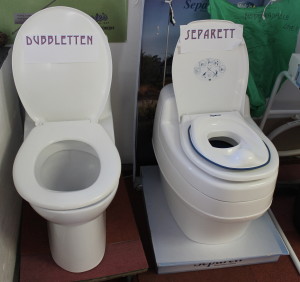
Two eco-toilets at the Cape Cod Eco-Toilet Center in Falmouth. The one on the right has a toddler seat on top.
The Eco-Toilet Center
Maingay and Barnhart founded the Cape Cod Eco-Toilet Center in the fall of 2012 to demonstrate the wide range of alternative toilets to Falmouth residents and anyone else who wants to take a look.
The toilet center is located on the New Alchemy Institute property next door to Maingay and Barnhart’s home, which stands as a model of ecologically sustainable living.
Maingay studied science education in college. Her husband, who was raised in Ohio, is a biologist.
They met at New Alchemy Institute in 1971 and were among the founders of the research and educational organization that focused on elements of sustainable living.
When they first came to New Alchemy, Maingay was doing research on gardens that don’t use any chemical fertilizers. Barnhart was studying alternative energy.
They raised three children in Falmouth and have a landscaping company called The Great Work, Inc., which has a focus on ecological landscaping and non-chemical solutions.
The Cape Cod Eco-Toilet Center is run by an all-volunteer non-profit called The Green Center, an educational and research organization that evolved from the New Alchemy Institute. It supports ecological projects in energy, agriculture, aquaculture, housing and landscapes and living in harmony with nature.
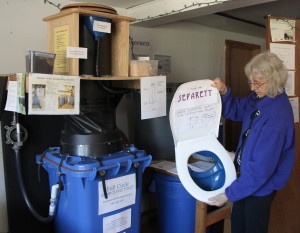
Hilde Maingay looks at the Separett toilet which uses a bin similar in size to a standard garbage can or recycling container for composting.
A Renaissance Woman
The Maingay/Barnhart home is a wonder of sustainability.
Besides three eco-toilets, the home, built in 1999, has solar electric and hot water panels and an attached greenhouse for growing food in winter, complete with ten solar ponds filled with catfish that help hold the heat in the ponds.
For Maingay, a world in harmony is not just an esoteric concept. She is also a musician, the first violinist with the Quincy Symphony. She once owned a dance studio in Falmouth, and these days, she takes ballet classes in her spare time.
She and Barnhart first got interested in eco-toilets back in the 1970s when New Alchemy was studying the devices. So when they built their home, they decided to include waterless composting toilets.
Until relatively recently, their activism on the matter of toilets extended only to showing off their odorless eco-toilet to visitors to their home.
When the town of Falmouth started to plan on for sewers and officials warned residents the price tag for sewering the town would likely be half a billion dollars, that got their attention.
“When we hear about a $600 million dollar plan, I said this is not feasible for a small town and doesn’t look like a sustainable way to look at the problem in the first place,” Maingay said. “There is an enormous amount of infrastructure to build this big sewer plant. And I’m also concerned about the nutrients being an asset instead of a liability. We started bringing that up. The nutrients are lost for purposes like agriculture. They are toxic waste instead of an asset.”
They proposed eco-toilets as a cheaper way to solve the problem. They sent their first report on eco-toilets to town officials in 2010.
Wastewater As Compost
Maingay’s idea of converting wastewater to compost may sound unusual but it is really rather elementary.
Turns out, human waste is mostly water and when it is composted, the water evaporates and bacteria feeds on the product, leaving a much smaller amount of dirt that is a mix of nutrients and organic matter.
After composting, the amount of waste from one person for a year amounts to no more than a bushel basket in volume. “It looks like garden compost,” Barnhart said.
By law in the commonwealth of Massachusetts, the compost from a composting toilet has to be buried under six inches of soil under trees or shrubs.
Maingay said nitrogen is not the only part of wastewater that has value.
“The last part of the equation,” she said, “is phosphorus is a limited material. It is mined. The world is running out of it rapidly and it is needed for food and agriculture production. Without phosphorus we have no food supply. This is a way to recover and use it again. Otherwise, it goes into the ocean and can’t be retrieved.”
With phosphorus, Maingay explained, humans use a small amount in their bodies and the rest gets excreted in what she called a usable form in urine. As is done in Europe, Maingay said, the urine can be put on agricultural fields instead of fertilizer.
“It can be made pathogen-free by heating it for three minutes at 171 degrees,” Barnhart said.
That method of reuse of phosphorus is already being used on hay field in Vermont. Barnhart said, “They got twice the harvest.”
Maingay’s idea is instead of building miles of sewer pipes and pumping wastewater using electricity from one end of Falmouth to another, then disposing of the effluent as toxic waste, why not install composting eco-toilets throughout town and use the compost.
“It becomes a fertilizer,” Hilda said.
“We can use it for lawns and as a substitute for chemical fertilizers, which are a big part of the problem,” Barnhart said.
Eco-Toilet Pilot Program
In 2012, town meeting unanimously passed article 17 which granted $2.2 million to do various test projects in Falmouth to test out alternatives for wastewater management, including eco-toilets and aquaculture.
The aquaculture pilot program that was started in Little Pond uses the filtering power of acres of oysters to clean the nitrogen from the pond. The oysters are then harvested and moved to a clean estuary where they clean themselves out through the filtering and can be harvested and eaten.
The best part about the oyster project, Maingay said, is that the oysters are doing much more than removing nitrogen from the estuary. They are also increasing biodiversity and improving the health of the ecosystem.
“That is ultimately what we’re all about. What we need is a productive ecosystem,” Maingay said.
The eco-toilet test program was allocated $500,000 dollars from the $2.2 million, and Falmouth residents were invited to sign up to have eco-toilets installed in their homes. So far, 15 homeowners have signed up and they are working to get their new toilets installed.
Maingay and Barnhart already know that eco-toilets work. They’ve had their toilet for 14 years.

A recently invented urinal for the home folds into the wall and features an easy way to divert approximately half the urine in the home, just the male half.
A State-of-the-Art Urinal
Recently, Maingay became excited about a new urinal on the market that she believes will solve the problem of men’s reluctance to adjust their manner of peeing in order to divert their urine. In a urine diverting toilet, men need to sit down to urinate.
Barnhart wrote a treatise on the matter called “Confessions of a Recovering Urinator.”
But with the new waterless urinal, called the Resno, which stands for Residential No Water, the urine is diverted without any change in behavior. Men can stand, just as they are used to doing.
Federal health authorities have already approved the Resno’s use in the United States and Canada.
The 92-year-old Canadian builder who invented the Resno has applied for approval in Massachusetts. Barnhart said, approval is simply a matter of being put on a list.
Maingay emphasizes that in addition to using no water and isolating the nitrogen-rich urine for reuse in the eco-system, the urinal also “addresses the age-old problem for women, the toilet seat up and urine splash around the toilet.”
The Commission’s Model
Maingay and Barnhart have also gotten involved with wastewater planning on the county level, through the Cape Cod Commission’s region-wide wastewater planning process.
The Commission, a regional planning agency, is using a special computer model in which different wastewater treatment alternatives are matched with an estuary to see what combination of methods could be used to clean up the pollution in that specific estuary.
Barnhart used the computer model for Little Pond and plugged in seven acres of oysters, eco-toilets, and fertilizer controls. With just those methods of wastewater control and no sewers, Barnhart said, “we are well beyond what we need to improve the estuaries.”

A urine diverting toilet has two sections, one for urine and one for solids. Men have to sit down and aim the urine into the front section.
Maingay said, “It has become really clear from doing that there are many systems that do a better job for less money than sewers. “
And, Maingay pointed out, “We get all good products: oysters that can eventually be filtered clean and harvested, urine that can be used as fertilizer.”
As the wastewater debate rages on, Maingay is encouraging people to visit the Eco-Toilet Center to check out the ten toilets they have on display plus the Resno urinal.
They both think the new urinal may be a game changer in the debate.
“People have been saying there is no silver bullet. But [when we heard about the Resno urinal] we thought ‘Aha, the silver bullet.’” Barnhart said.
Or perhaps it is the golden one.
– Laura M. Reckford

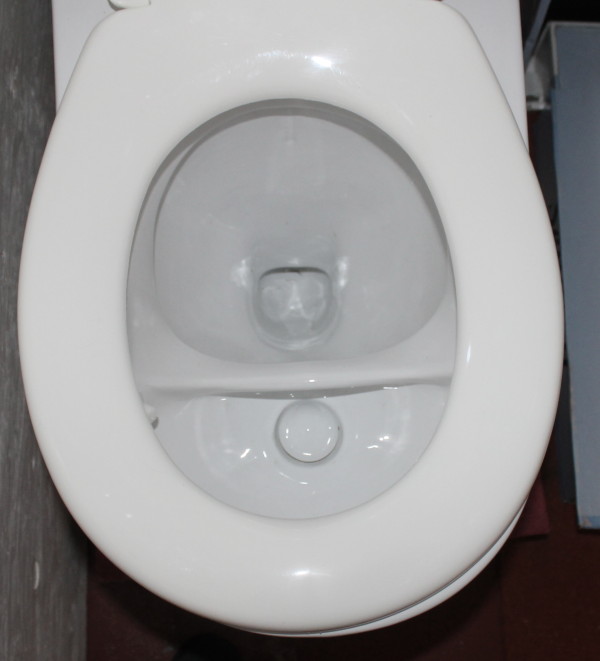
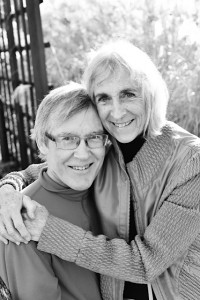
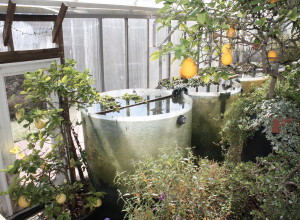

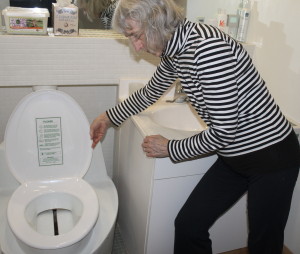
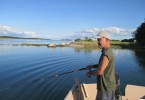






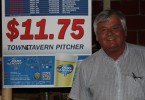







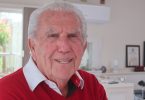








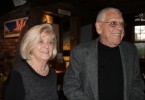





Where can I purchase one of these flushable urine diverting toilets?
ned cost ,size and material these toilets made of